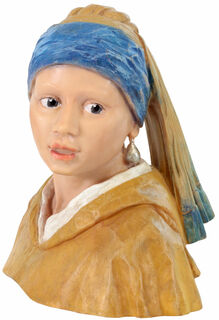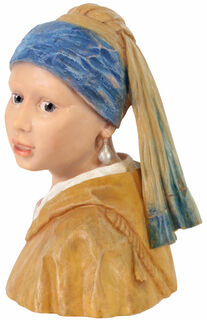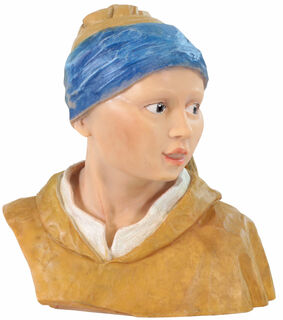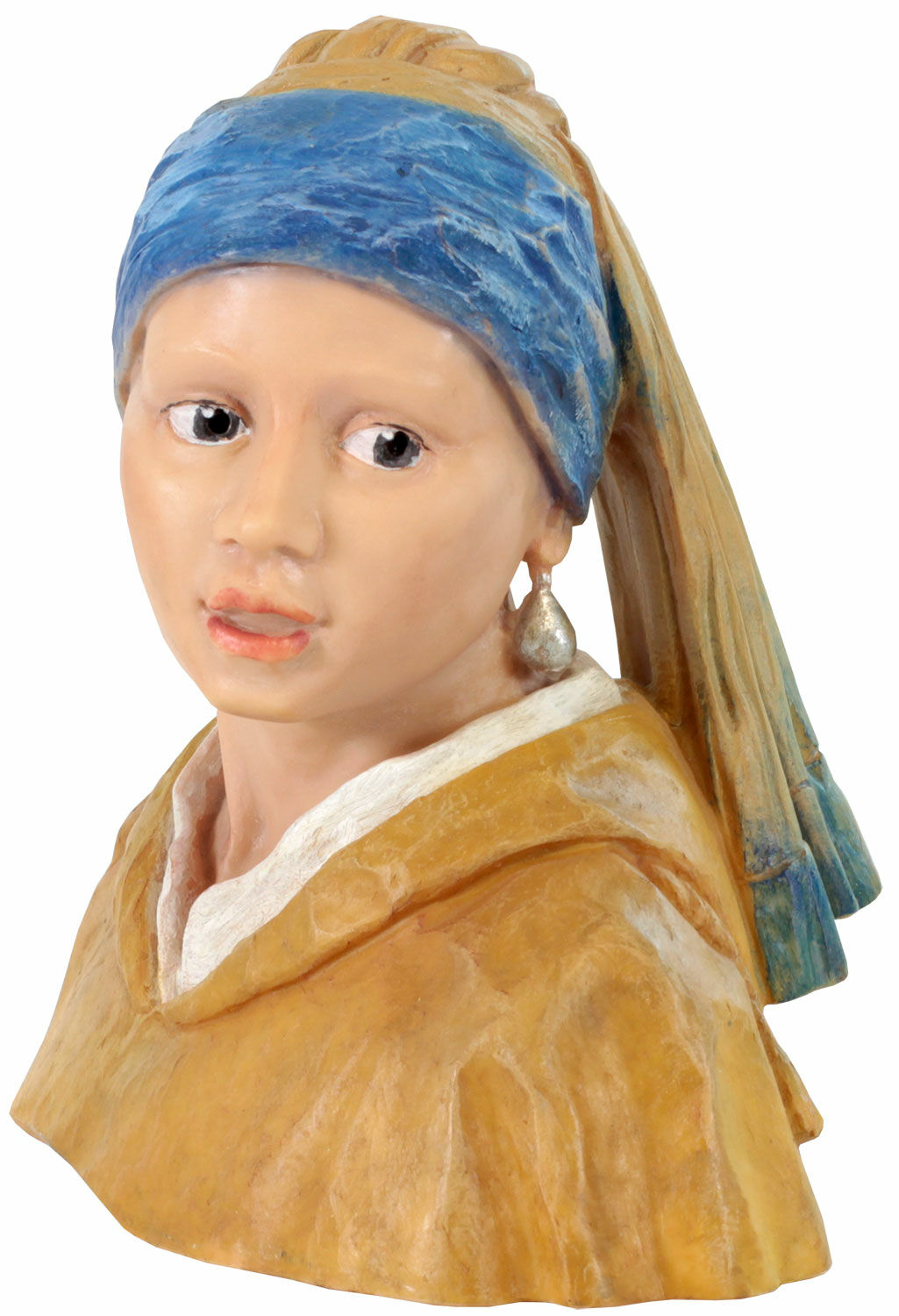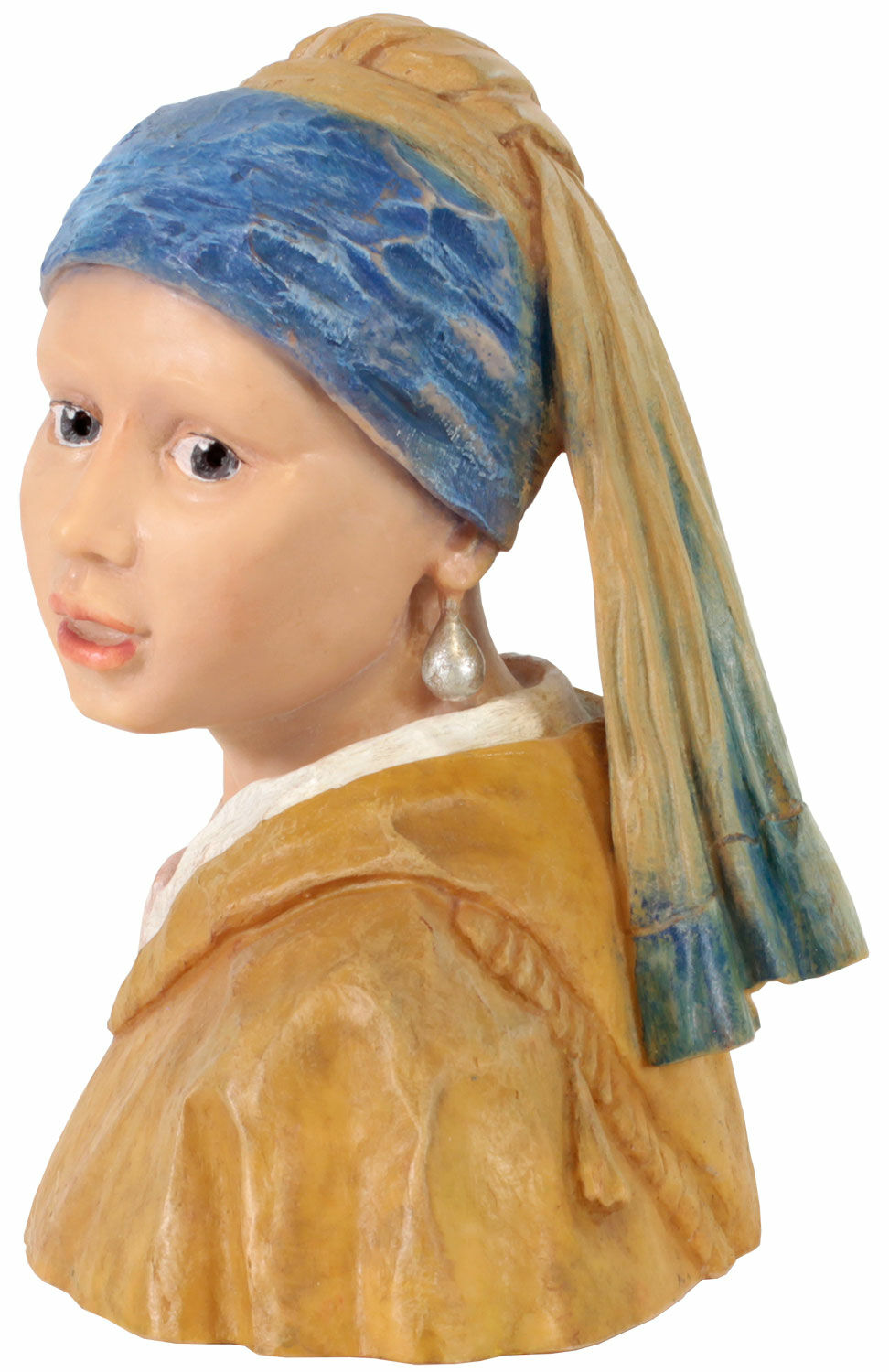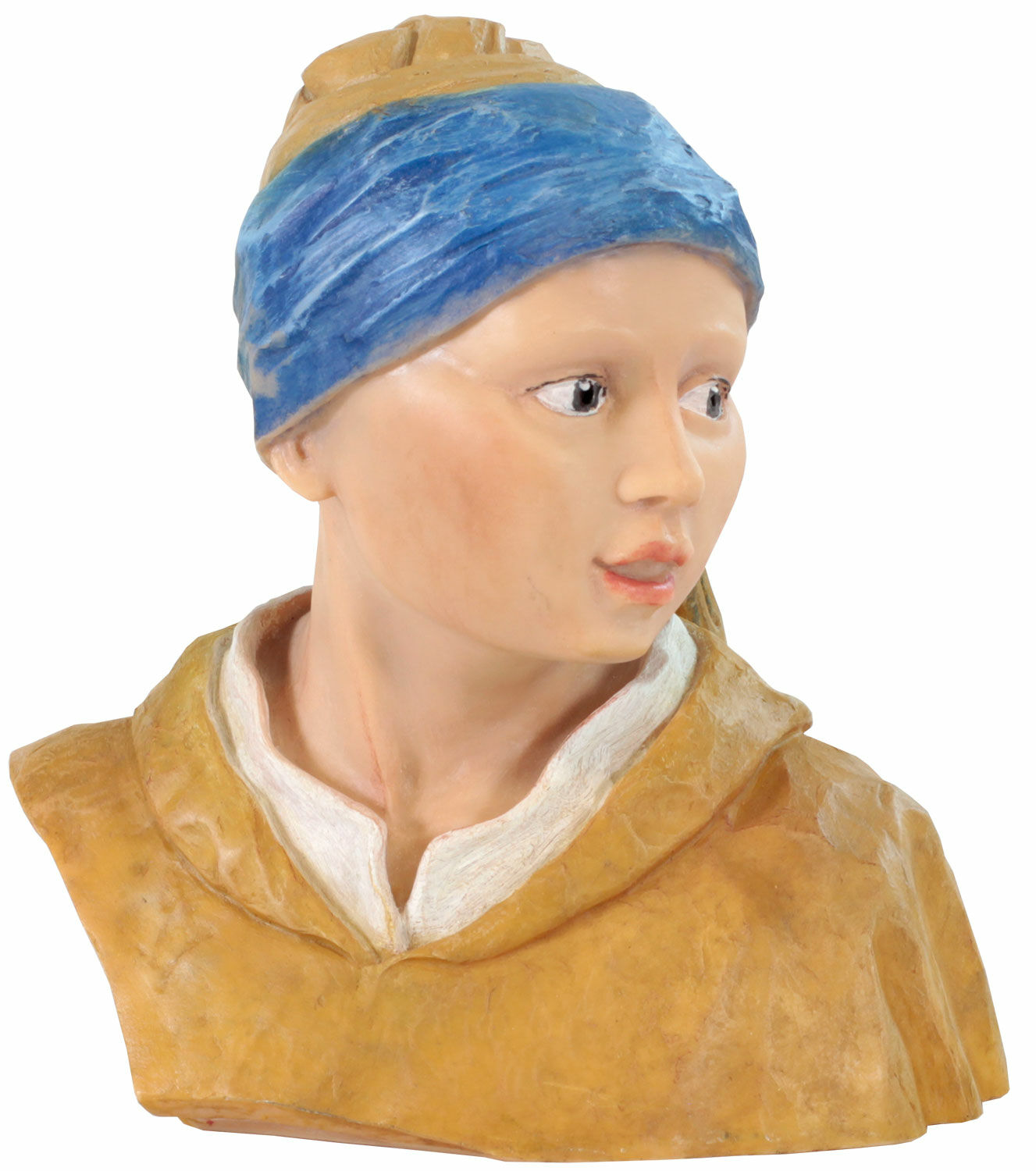Quick info
ars mundi Exclusive Edition | cast | size 17.5 x 16 x 12 cm (h/w/d)
Detailed description
Table sculpture "Girl with a Pearl Earring", cast
The most popular picture by Jan Vermeer is the portrait "Girl with a Pearl Earring", painted around 1665. Now, for the first time, the motif is available exclusively at ars mundi as a baroque table sculpture. Our sculptor's model accurately reproduces van Delft's original.
Sculptor's model after the oil painting from 1665. Size 17.5 x 16 x 12 cm (h/w/d). Edition made from cast.
About Jan Vermeer van Delft
Jan Vermeer is one of the most important Dutch painters of the Baroque epoch. He was baptised on October 31, 1632 in Delft and buried there on December 15, 1675. As there was no school of painting in Delft at that time, the son of a silk weaver, art dealer and innkeeper was trained as a craftsman. His admission to the Delft Guild of St. Luke in 1650 testifies to his activity as a master painter. Only 37 of his paintings have survived to this day. His main theme was genre painting, as there are only a few portraits or religious paintings in his œuvre.
The interior views radiate silence, security, and inner peace. The painter from Delft was able to achieve these effects with subtle colour harmonies and refined shadows. He was also a master of the photographic perspective. The genre paintings show few figurative scenes, to which symbolic content is often attributed.
A special mention should be given to Vermeer's Delft City View of 1661, whose naturalism testifies to a high level of mastery. In addition, "The Girl with the Pearl Earring" became the epitome of beauty and grace. For the painter, it was a challenge to bring the viewer into contact with the model. The young woman's eye contact skilfully establishes a connection, but at the same time achieves distance again through the body that is turned away. Many generations of art lovers have rightly been fascinated by the extraordinary expression of this painting.
Vermeer strove for perfection in his painting, often produced only just four paintings a year. As a result, the father of eleven children struggled with financial hardship, which increased during the last years of his life. Right after his death, Jan Vermeer fell into oblivion. It was not until the middle of the 19th-century that people learned to appreciate the quality of his paintings.
Epochal term for the art of the 17th century. The Baroque style of art, which originated in Rome around 1600, permeated visual arts, literature and music practically all over Europe within a very short period of time and lasted until 1770 in the visual arts. The last phase is generally characterised by Rococo.
Characteristic features include: the pulsating movement of all forms, the abolition of boundaries between architecture, painting and sculpture, that resulted in the epoch typical "Gesamtkunstwerk" ("total work of art"), and especially the purposeful use of light, which became an important artistic component. The subordination of the individual parts to the whole resulted in the creation of a unified and, at the same time, dynamic space, which is fully expressed in the magnificent buildings of this period.
The Baroque art, with its penchant for grandeur, splendour and rushing abundance, clearly reflects the desire for representation, which was a concern of secular and ecclesiastical, especially the Catholic, patrons of the time, who were strengthened by the Counter-Reformation. In painting, characteristic features of the Baroque, are manifested in the altar and ceiling painting, history and portrait.
Typical representatives include artists such as Anthony van Dyck, Peter Paul Rubens as well as Gian Lorenzo Bernini in the field of sculpture.
Sculptural representation of person's head and shoulders.
Graphic or sculpture edition that was initiated by ars mundi and is available only at ars mundi or at distribution partners licensed by ars mundi.
Collective term for all casting processes that ars mundi carries out with the help of specialised art foundries.
Stone casting
Similar to artificial marble, with the difference that the substitute stone in powder form is used instead of marble powder.
Bonded Bronze (Cold-Cast-Bronze)
Bronze powder is polymer-bonded. Special polishing and patination techniques give the surface of the casting an appearance similar to the bronze.
Imitation Wood
In order to guarantee absolute fidelity to the original, an artificially manufactured imitation wood is used as a base material that features typical wood characteristics: density, workability, colour and surface structure.
Ceramic Mould Casting
Ceramic mould casting usually requires the use of casting clay, which is then fired and optionally glazed. Instead of the usual rubber moulds, plaster moulds are often used in ceramic casting and porcelain production.
Cast Bronze (Lost-Wax Casting)
For the cast bronze, the thousand-year-old lost-wax technique is used. It's the best, but also the most complex method of producing sculptures.
A plastic work of sculptural art made of wood, stone, ivory, bronze or other metals.
While sculptures from wood, ivory or stone are made directly from the block of material, in bronze casting a working model is prepared at first. Usually, it is made of clay or other easily mouldable materials.
The prime time of sculpture after the Greek and Roman antiquity was the Renaissance. Impressionism gave a new impulse to the sculptural arts. Contemporary artists such as Jorg Immendorf, Andora, and Markus Lupertz also enriched sculptures with outstanding works.

